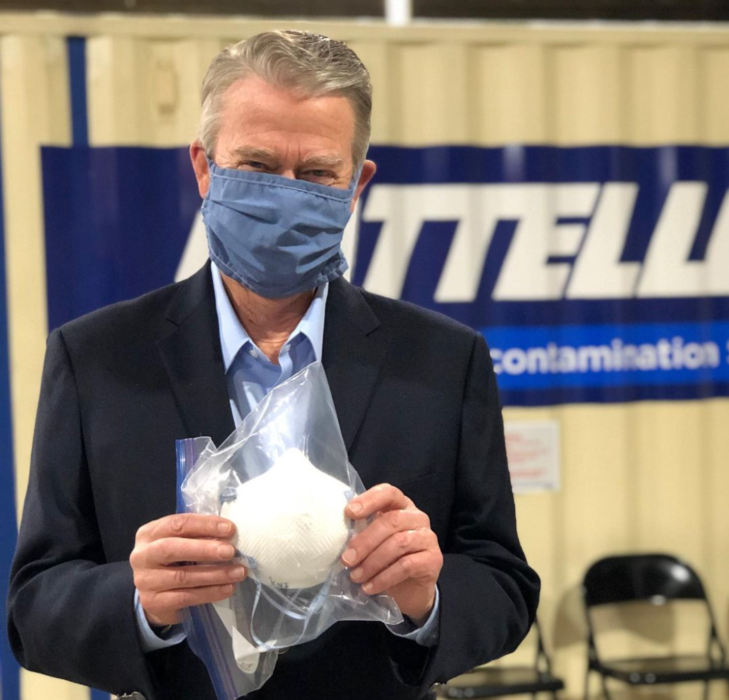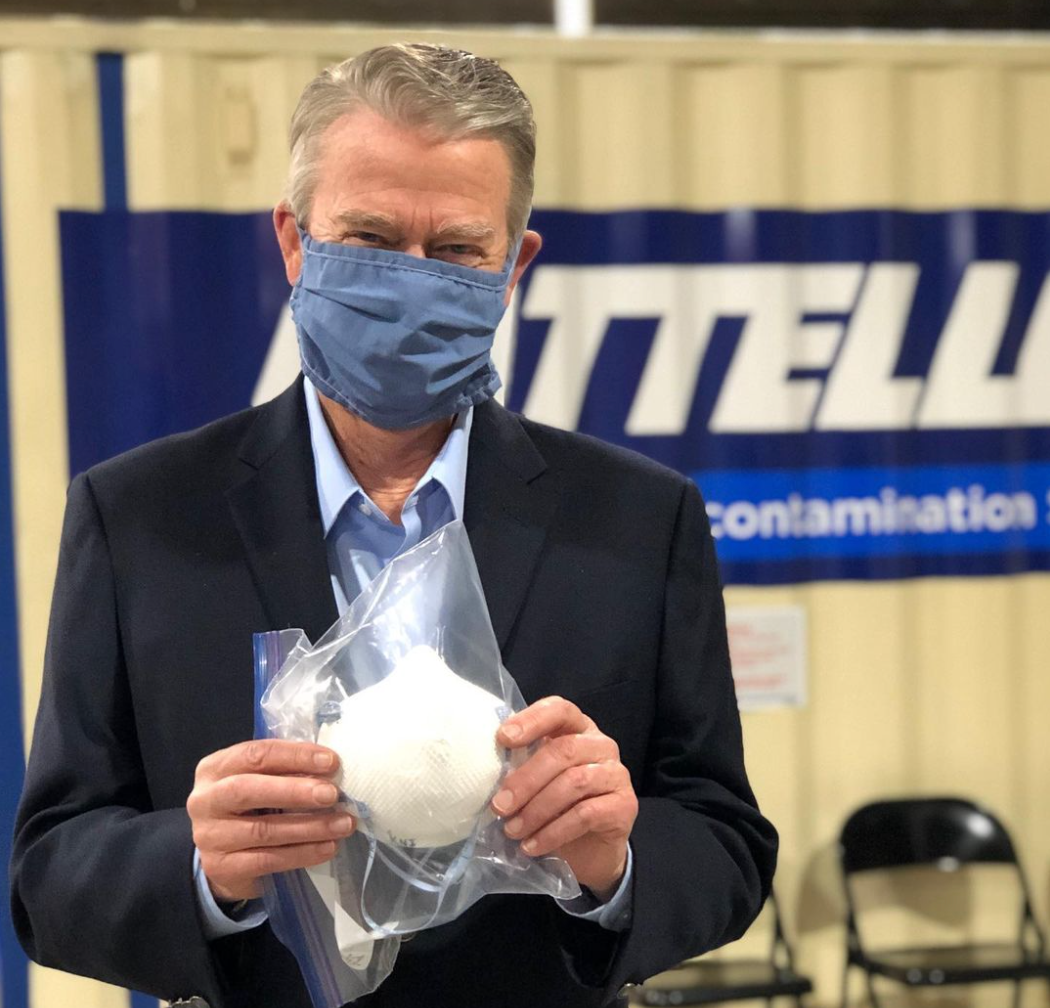
At 11:59 last night, Washington residents began living under the most severe social-distancing requirements since April. New COVID-19 case counts and hospitalizations have reached record levels in the state, prompting Governor Jay Inslee to halt indoor service at social establishments — bars, restaurants, and the like — and place limits on any indoor gatherings for at least four weeks. Announcing the measures on Sunday, he spoke in no uncertain terms.
“Today, November 15, 2020 … is the most dangerous public health day in over 100 years in our state’s great history,” Inslee said in an online press conference. “We have a pandemic raging across our state. It is a potentially fatal disease. … Left unchecked, we will see continued, untold numbers of deaths.”
New cases and hospitalizations are at all-time highs across the border in Idaho, too, but Governor Brad Little’s response there has been comparatively lax. Last week, Little moved the state back a rung on its graduated reopening plan. The headline: gatherings are limited to 10 people. Churches are exempt. Bars and restaurants are still open (customers have to be seated). Masks? Optional.
The implications of Little’s approach don’t adhere to state borders. Idaho COVID-19 patients, particularly in rural areas, are ending up in eastern Washington hospitals. That, Inslee said Sunday, makes Little’s reluctance to impose stricter health requirements unconscionable.
“One of the reasons we have such jammed up hospitals in Spokane is because Idaho, frankly, has not done some of the things that we have found successful,” Inslee said. “We hope Idaho over time will be more aggressive and responsible.”
The disconnect between Inslee and Little typifies the state-by-state hodgepodge of coronavirus measures. Little is a member of the “personal responsibility” club of Republican governors whose strategy until now has been to forgo strict social distancing measures, targeted business closures, and mask mandates. Instead, they have placed the burden of accountability on their residents. This strategy — deployed by Little, North Dakota’s Doug Burgum, South Dakota’s Kristi Noem, and Wyoming’s Mark Gordon, among others — has not worked. As of this writing, the rate of new cases per capita over the last week is highest in the Dakotas, and Wyoming isn’t far behind. And, thanks to a gaping lack of support from Congress and the White House, these governors now have few options for recourse as the pandemic enters its most dangerous phase yet.
This story first appeared in the Bitterroot Newsletter. Sign up below to receive Jake’s latest reporting right in your inbox.
Idaho has had a uniquely discombobulated response to the virus. Little’s hands-off approach was consistent with his counterparts in neighboring rural states that had minuscule case counts and positivity rates early in the pandemic. But that wasn’t the case in Idaho — Sun Valley, for instance, was the site of one of the nation’s first major outbreaks.
With new cases and hospitalizations now at their highest levels yet, Little, according to reporting by the Idaho Statesman, has no idea what to do. Taking action appears to be a political nonstarter in Idaho. Little is reportedly still reeling from intraparty pushback against his initial shutdown; his own lieutenant governor openly flouted the stay-at-home order and still acts as though the virus isn’t real. State House Speaker Scott Bedke cast aside the notion of a mask mandate: “Are you ready to tattle on your neighbor?”
Little’s dilemma illustrates how partisanship has dictated the U.S. response to the coronavirus. Research out of the University of Washington has found that a governor’s party affiliation and the level of support for President Donald Trump within the state have been key factors in determining the timing and duration of social distancing measures and mask mandates during the pandemic.
“Republican governors were about 30 days slower to implement [mask] mandates. Combined with the effect of having conservative citizens, 38 days slower,” Christopher Adolph, who directs the UW’s COVID-19 State Policy Project, said in a recent presentation. “On the other hand, epidemiological indicators had much less impact … compared to politics.”
Why? Adolph’s team cites three factors. The first is Donald Trump, who has openly mocked even the simplest safety measures, like wearing masks and standing far apart from others. The second factor is also political. Conservative voters, following Trump’s lead, are skeptical of COVID-19’s severity, thus making them less likely to support any business restrictions. Those on the far right see mask mandates as an unconstitutional violation of freedom. Finally, those same voters are less likely to trust expert advice. Mix those three ingredients, and you get a “personal responsibility” cocktail.
Adolph’s dynamic has certainly played out in Idaho. “I think we’ve educated, educated, educated, but people can find these crazy sources on the internet that support their belief,” Dr. Barbara Nelson, a member of the Eastern Idaho Public Health board, told the Statesman.
Other governors are taking more forceful action. Ahead of Inslee’s announcement, Oregon Governor Kate Brown issued similar restrictions, and New Mexico’s Michelle Lujan Grisham reinstated a stay-at-home order for at least two weeks. Facing alarmingly full hospitals, Utah Governor Gary Herbert finally mandated his residents wear masks in public. Doug Burgum also told North Dakotans to mask up.
But Little isn’t the only personal responsibility champion to hold off on a mask mandate. In Wyoming, Governor Mark Gordon has, since July, expressed frustration with residents going maskless and holding large gatherings. In a recent address, he admitted that relying on our better instincts isn’t working.
“It’s time that Wyoming woke up and got serious about what it’s doing,” Gordon said. “We’ve relied on people to be responsible, and they’re being irresponsible. They think somehow this is all nonsense.” Gordon is consulting with “local business leaders” on what the next public-health steps should be.
Governors like Gordon and Little have framed their personal responsibility tactics as appeals to Western pragmatism and freedom. In reality, they’re kicking the coronavirus can down the road, continuing a process that began with Trump.
“The best thing,” Dr. Ronald Solbrig, an advisor to the Southeastern Idaho Public Health district, told the Statesman, “would have been to have a strong federal government that didn’t leave it up to individual states, and then governors that didn’t leave it up to individual counties, that then left it up to individual county commissioners.”
But even if Little and company decided to take bold action, they’d be doing so at a far more precarious time than in the spring. During the initial outbreak, governors could shut down businesses knowing that the federal government was offering a greatly expanded safety net. Extra unemployment benefits, payroll replacement loans, and eviction moratoriums meant people could still survive if their employer shut down.
But Congress has not re-upped those programs, and it has governors reeling. In lieu of federal funds, Colorado’s Jared Polis is calling a special session to cobble together a $1.3 billion stimulus package. Steve Bullock, the lame duck Montana Democrat, opted against further restrictions, even though the virus is spiraling out of control in his state.
“Congress has not passed another relief package. They have not done so since March,” Bullock said in a recent press conference. “I have grave concerns … about sending tens of thousands of Montanans to the unemployment line without enhanced benefits. How will those Montanans keep the heat on? How will they keep their families fed?”
Bullock must have missed the memo — that’s their personal responsibility.
Does your loved one love the West?
Worth a Read
Top stories from around the West
Candidates in 2022 ought pay attention to the work of Latino groups and labor unions — they very well may have delivered Joe Biden a win in Arizona and Nevada thanks to their (socially distanced) door-knocking campaigns.
•••
Giant sequoias are tailor-made to survive fire. But, as the Los Angeles Times’ Bettina Boxall writes, many trees hundreds of years old weren’t able to withstand the Castle Fire that burned on the Sierra’s east slope earlier this year.
•••
Remember the Great American Outdoors Act that helped get Steve Daines reelected? Well, the Department of the Interior is shortchanging its implementation. After blowing past the Nov. 2 deadline for a list of projects, a memo last week from Interior Secretary David Bernhardt requires the sign-off of governors and county commissioners on any purchases of new public land.
•••
Ugh — I don’t care if more people are working from home, COVID-19 is not an excuse to shift our homebuilding focus back to sprawl. Yet some researchers think Utah needs “smart sprawl” that places greater emphasis on car-oriented development, The Salt Lake Tribune reports. Don’t bite, folks — sprawling single-family developments have a far higher cost for the climate, government, and individuals.
•••
Related: Joe Lindsey writes in Outside that the pandemic could be the force that tips us toward more bike- and pedestrian-friendly infrastructure. Oakland led the country by closing off 74 miles of streets for pedestrians, and the move was hugely popular.
•••
Joe Biden will likely halt construction on Trump’s border wall. But conservation and human rights groups hope he goes a step further and tears down the “monument to racism.” The Arizona Republic’s Rafael Carranza has the story.
•••
The Trump administration is rushing to sell off drilling leases in the Arctic National Wildlife Refuge, long seen as a coup for the oil and gas industry. Never mind that oil prices have plummeted — a lease is good for 10 years, so leaseholders would have plenty of time to wait for prices to rebound.
•••
Early in the pandemic, landlords were told to stall evictions. This Republic investigation finds they booted folks anyway — more than 900 families in Phoenix alone.
Bitterroot relies on the support of readers like you
Your Land
An ode to the public lands we share

Share with a friend | Watch a cat video | View previous newsletters

